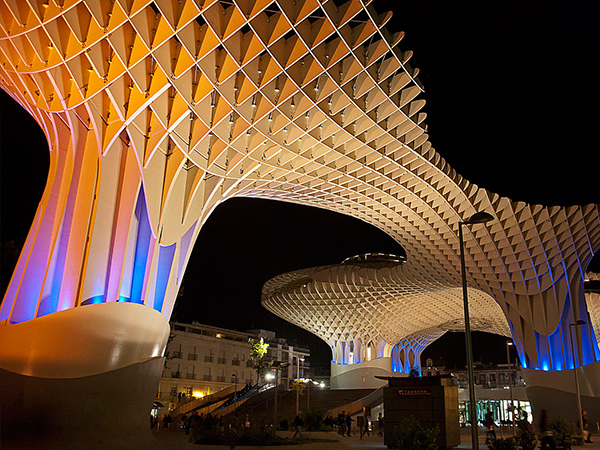The Atomium 1958, Brussels , Avenue de l’Atomium, 1020 Bruxelles, Belgium, 102 meters. By Andre Waterkeyn.
Have you ever wondered what a crystal of iron would look like magnified 160 billion times? Well I have, so thank goodness for Monsieur Andre Waterkeyn who designed the stunning Atomium, constructed in 1958, for the World’s Fair in Brussels. Now I know what a huge iron crystal looks like and I have to say I really like it. To be fair to Atoms, it is really a molecule, each sphere represents an atom.The 1958 World’s Fair was the last of the four World Fairs to be held in Belgium. Contructed for the 1958 World’s Fair in Brussels, the Atomium was only supposed to last six months, the duration of the event.

An aerial photograph of The Atomium 1958, Brussels
An engineer in the nuclear age
Andre Waterkeyn was born 1917 in Wimbledon, London and died in Brussels in 2005 at the age of 88. In a moment of quite delightful synchronicity Double Stone Steel are building a new stainless steel coloring factory in Wimbledon.
In 1954 Waterkeyn whilst working for Fabrimetal a group of metal fabrication companies, was asked to design a building that would showcase Belgian engineering skills to the world. An iron crystal magnified 165 billion times was deemed the way to go.
Three industrial groups – the Federation of the metalworking, mechanical and electrotechnical engineering industries, the Belgian blast-furnace and steel working group and the Union on non-ferrous metals industries – joined together in a non-profit-making organisation and appointed André Waterkeyn as Managing Director.
The Atomium was a monumental image of the then new and exciting nuclear age. During the fair, the Atomium held an exhibition showing the benefits of nuclear science to mankind. This was the age where the boffins around the world were convinced that nuclear science would completely remove the need for anyone work or for any other type of power generation system. Electricity would be so cheap that it would be free to all. The world would find its Utopia at long last. The Nuclear age was going to be, safe, cheap and simple. Nuclear power would save the world. I am not sure the general public were convinced as the memory of the nuclear booming in Japan were very fresh.
The Atomium’s physical structure
The Atomium consists of nine spheres, each sphere having a diameter of 18m.The spheres are connected by twenty, 23m long metal tubes, the tubes have a diameter 3.3m. The tubes allow the visitor to move between the spheres using escalators or staircases. The structure stands on three pillars known as ‘bipods’. In 1958 the Atomium had the fastest lift in Europe, reaching speeds of 5 meters per second

Cover to Paris Match
The original construction of the frame was in steel, with 10-12mm aluminium panels. The spheres’ aluminium is an alloy called ‘Peraluman 15’ which was then covered with a thin sheet of aluminium called ‘reflectal’, which was then highly polished. In 2004 the building was shut to the public to be refurbished. The original aluminium panels being replaced by polished stainless steel panels. Over 6000 honeycombed panels were fabricated in 1.2mm, grade 316L with a rock wool insulation core and a 1mm galvanised interior skin. The building looks wonderful and should stand for many many years.
“The story of the Atomium is, above all, one of love, the love that the Belgians have for an extraordinary structure symbolising a frame of mind that wittily combines aesthetic daring with technical mastery. The appearance of the Atomium is unusual and unforgettable. It has a rare quality of lifting everyone’s spirits and firing their imagination.”
– Diane Hennebert, former director of the Atomium, 2008

Close up of one of the Atomium’s spheres



